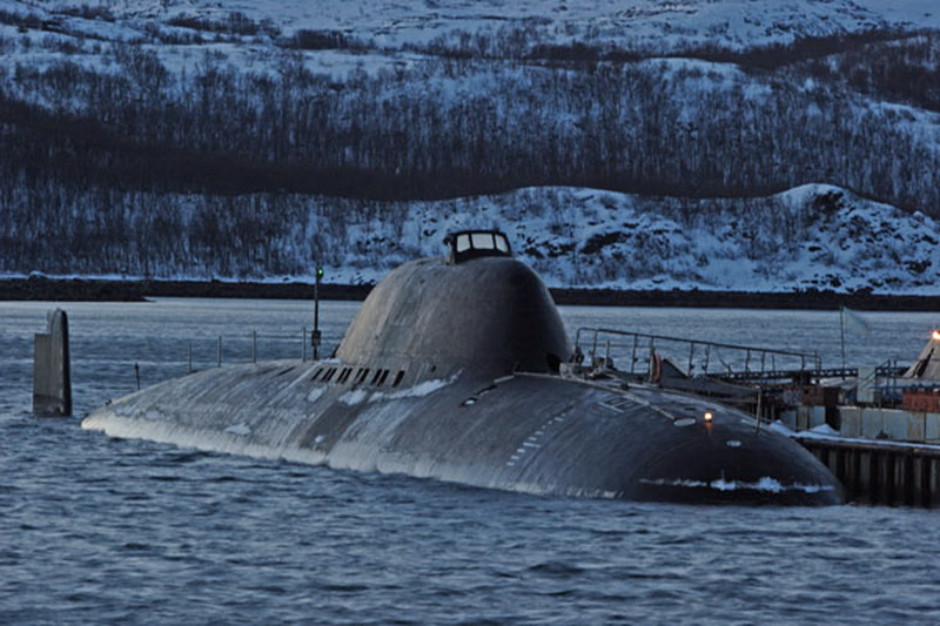
 Russian ALFA Class interceptor submarine
Russian ALFA Class interceptor submarine At the height of the Cold War NATO submariners found themselves confronting a Soviet submarine which not only greatly out-performed their own boats, but which could operate beyond the reach of their weapons. This untouchable submarine was designated the A-Class (‘ALFA Class’) by NATO, and Project-705 Lyra by the Russians.
At the height of the Cold War NATO submariners found themselves confronting a Soviet submarine which not only greatly out-performed their own boats, but which could operate beyond the reach of their weapons. This untouchable submarine was designated the A-Class (‘ALFA Class’) by NATO, and Project-705 Lyra by the Russians.
Original Artwork, CLICK for HIGH RESOLUTION:

At 41 knots and 400 meters the ALFA Class pushed the boundaries of both speed and operating depth. Speed was a key attribute of nuclear powered attack submarines, enabling them to maneuver into a firing position much more easily compared to slower diesel-electric submarines, and to escape more easily after the attack thus living to fight another day. This meant that a nuclear-powered attack submarine could expect to make multiple attacks against enemy surface groups, ultimately expending all its torpedoes before being effectively countered. US Navy first generation Skipjack Class submarines were in this camp and could obtain an impressive 33 knots. As far as NATO was aware the ALFA was the fastest submarine in the world although actually the single Project 661 PAPA Class submarine reached a speed of 44.7 knots.
The World's ONLY Guide to
Narco Submarines
10 years of research, analyzing over 160 incidents, condensed into a handy guide. This unique book systematically breaks down the types and families. With detailed taxonomy, recognition 3-views, profiles and photos. Available on Amazon
Original Artwork, CLICK for HIGH RESOLUTION:

In terms of depth it could operate where other submarines would consider their test depth (i.e. deeper than they should operate). These depths were below the reach of NATO anti-submarine weapons of the time, although naturally they caught up in later years in order to counter the ALFA. And thanks to a pneumatic launch system it was the first Russian submarine which could launch its weapons from the full spectrum of operating depths. Thus it could theoretically sit below the reach of NATO weapons while launching its own weapons.
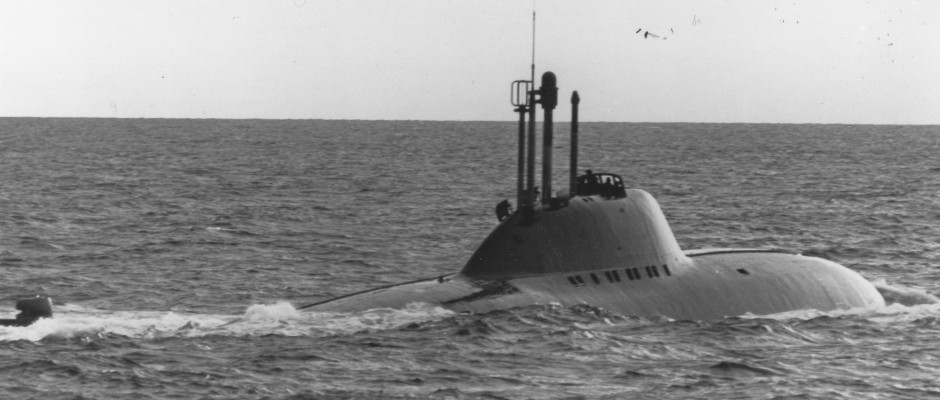
There were other aspects of outstanding performance as well. The relatively small boat (it was considered the smallest nuclear powered submarine) had a very powerful propulsion system, large control surfaces and a streamlined sail which did not provide very much resistance when the submarine turned (unlike on NATO submarines where the Sail acted as a wing at high angles of roll). This was combined with a very high reserve buoyancy of around 30% (compared to ~11% for NATO boats). Consequently the ALFA could change direction and depth very quickly, making it a particularly difficult target.
Get The essential guide to World Submarines
This Covert Shores Recognition Guide Covers over 80 classes of submarines including all types currently in service with World Navies.Check it out on Amazon
Seven ALFAs were built, with the first (K-64) being commissioned in 1971 and acting as a test platform for the production boats which joined the Northern Fleet from 1977. Three boats built at a different boat yard than the first boat (N 402 Northern Machine-Building Enterprise at Severodvinsk versus Sudomech Plant / Leningrad Admiralty Association in Leningrad) were built to a slightly modified Project 705K standard which had a larger reactor compartment for improved cooling.
The boat featured very high levels of automation even by today’s standards. Instead of a crew of ~100 men per NATO boats, it was crewed by just 32 men. Originally it had been planned that it would only require16 people, but later due to Navy requirements the crew wasincreased to 29 men (25 officers and four warrant officers). Finally in operational service the crew was increased to 32 people. Reducing the crew led to more stringent requirements for reliability of equipment and meant that many maintenance tasks could not be performed during the voyage. Thus a new operating concept was required which saw the ALFAs spending most of their time in port, rushing out to intercept enemy surface groups or submarines. The ’Interceptor submarine’ was born.
The tiny crew, made up of nearly all officers, lived in the central compartment of the submarine. The forward section containing the weapons system and electronics was only accessed for maintenance, as was the rear reactor and propulsion compartments. Torpedo loading was completely automated for example. This would have increased crew survivability in the case of war because the forward and aft compartments could be sealed off during operations. It was also the first submarine to be equipped with an escape capsule, which is now a standard feature of Russian boats.
The concept of a very small, very fast interceptor submarine was not new to Russian designers. In some respects, the ALFA Class was the follow-on to the unbuilt Project-673 design:
 Project 673 Advanced Submarine design. w/Cutaway
Project 673 Advanced Submarine design. w/Cutaway
The command center was compact with all relevant functions in one space, which reportedly increased operating efficiency.
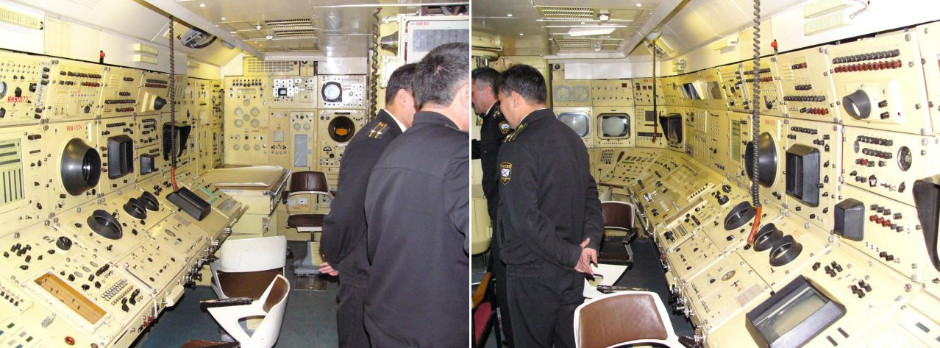
THE book on Special Forces subs Covert Shores 2nd Edition. A world history of naval Special Forces, their missions and their specialist vehicles. SEALs, SBS, COMSUBIN, Sh-13, Spetsnaz, Kampfschwimmers, Commando Hubert, 4RR and many more.
Check it out on Amazon
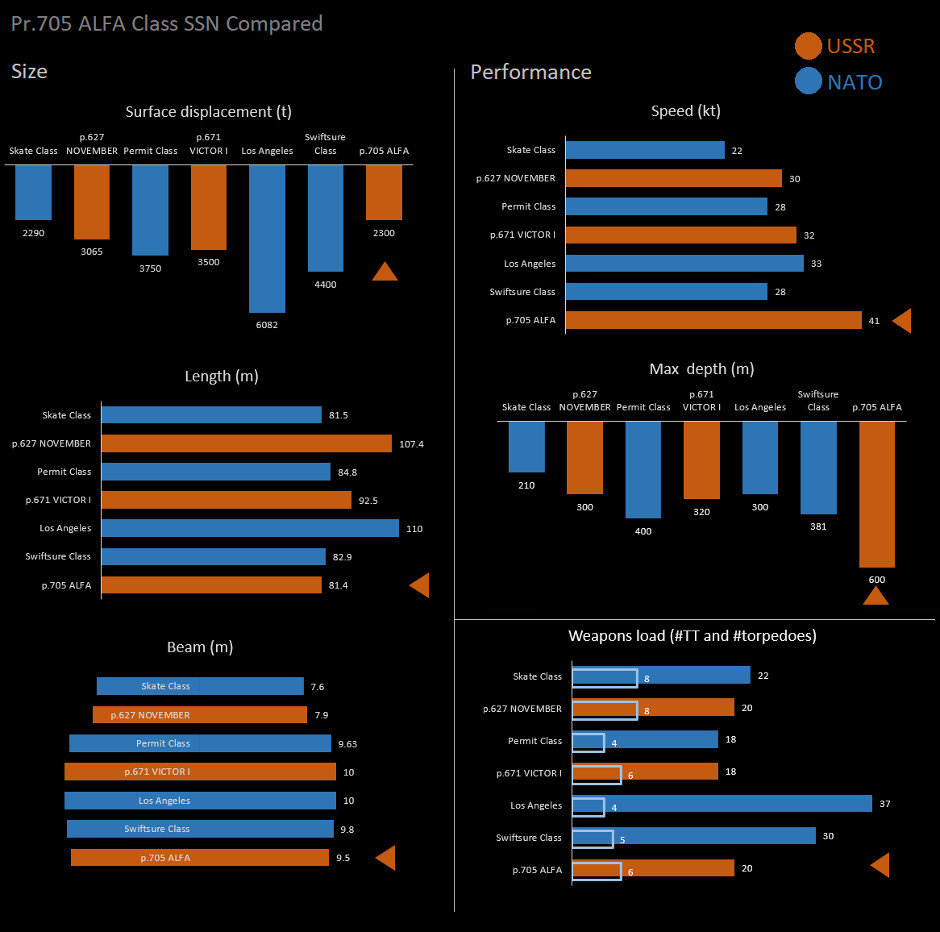
The secret to the ALFA’s exceptional performance was its lightweight Titanium hull. Other submarines (again, except the PAPA Class), were constructed of steel which was heavier and less resilient to stresses. The Titanium hull was incredibly expensive and required specialist technologies and skills to be established. For many years NATO was unsure of the ALFA’s construction although there was a camp in Western intelligence which suspected that it was made of something other than steel. In the end some incredible detective work by CIA and Navy intelligence officers yielded the answer – see CIA.gov
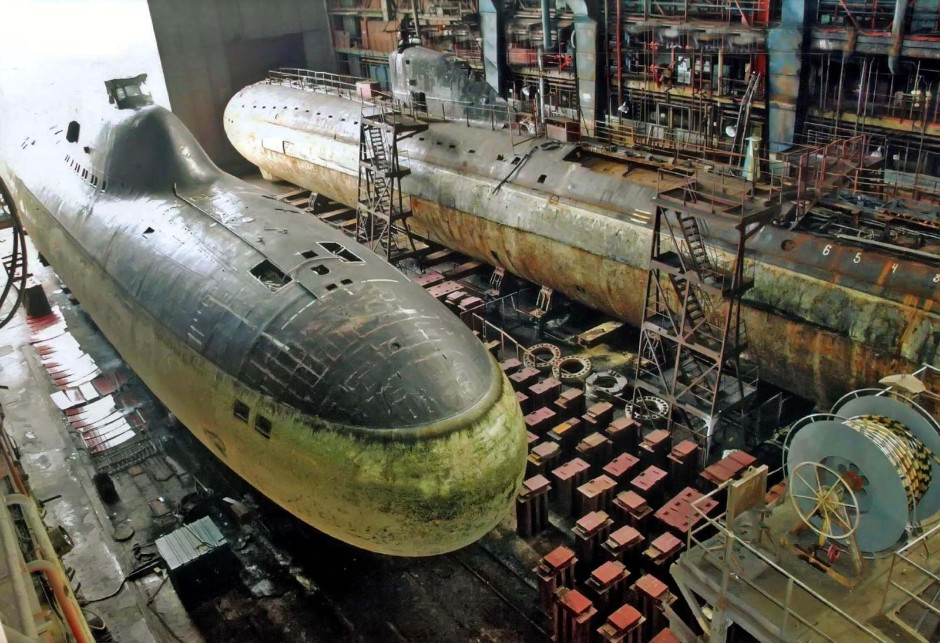

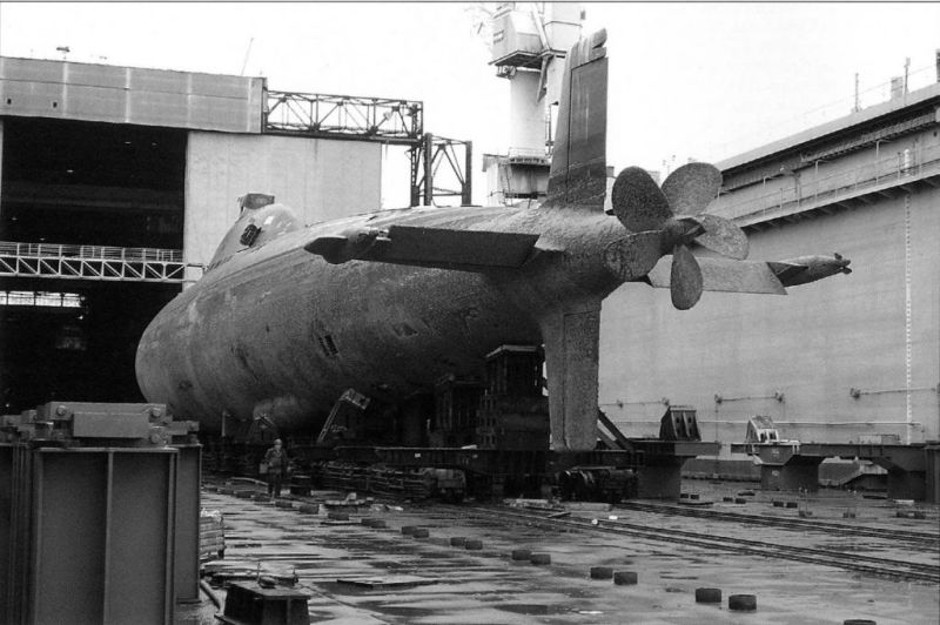
The innovative hull construction was merged with an exotic reactor type. Instead of a pressurized water system, the reactor was cooled by a liquid metal, lead-bismuth. This had a much smaller, had a higher energy efficiency (approximately 1.5 times the pressurized-water reactor) and were safer because the lead-bismuth quickly solidified in the case of a leak, shutting down the core.
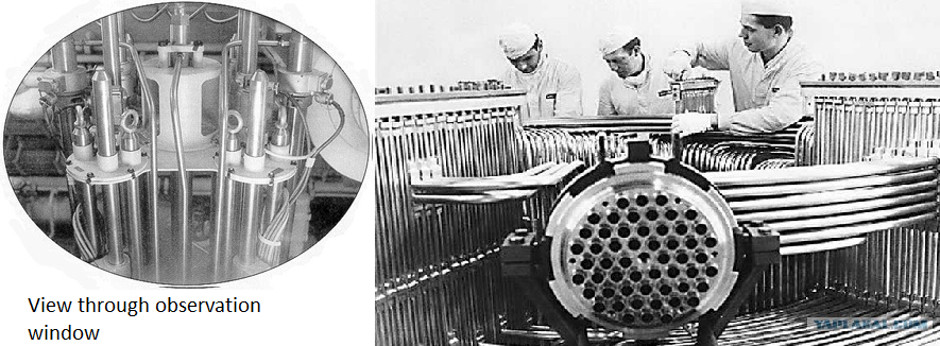
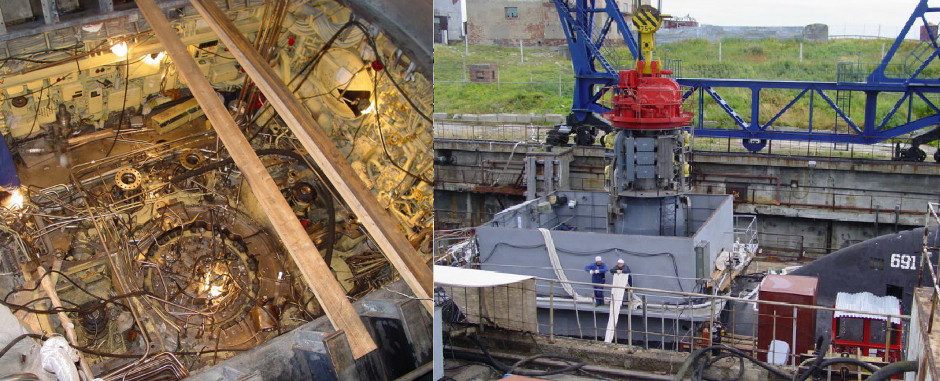
This last feature of the lead-bismuth reactor was also its Achilles’ heel. If the temperature of the reactor dropped below 125 °C (257 °F) then the reactor solidifies and cannot be brought back. Ever. This happened to the lead boat, K-64, in 1972, resulting in an early departure from service.
A less obvious weakness, unbeknown to the Soviets when they designed the ALFA Class, was that there was a reason why NATO submarines were no longer pursuing speed as the most critical factor. The British Churchill Class boats could only achieve 28 knots compared to 29 knots of the previous Valiant Class, and the US Navy’s Sturgeon Class boats could only do 26 knots. NATO had switched its focus to stealth with boats having to feature raft mounting and other space-consuming features. The ALFA Class was incredibly noisy by comparison, although in some cases its great operating depth allowed it to slip beneath water layers which reduced passive sonar effectiveness.
The first boat, K-64, was formally decommissioned in 1974, and the operational boats being retired in 1990 with one boat, K-123, lasting until 1996. There were rumors in the Russian press in 2016 that an upgraded version of the ALFA Class would be reintroduced into service although this does not seem likely.

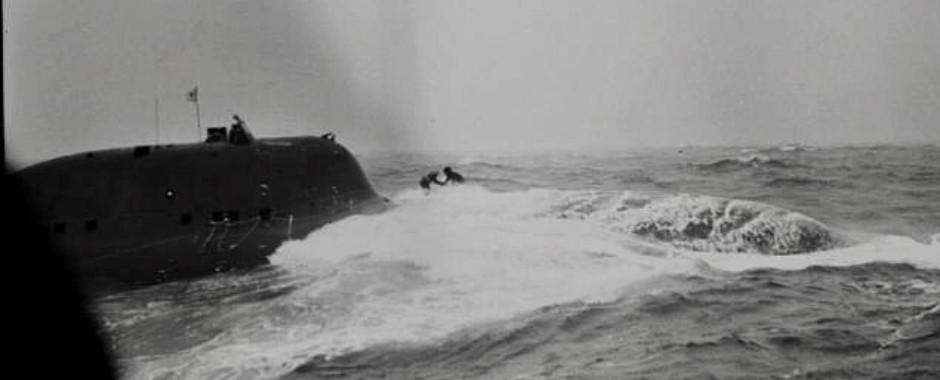
The ALFA Class was undoubtedly an incredible submarine but its unique operating concept was not repeated by the Russians.
Related articles (Full index of popular Covert Shores articles)





 Nordenfelt steam powered submarines of the 1880s. w/Cutaway
Nordenfelt steam powered submarines of the 1880s. w/Cutaway

 Project 673 Advanced Submarine design. w/Cutaway
Project 673 Advanced Submarine design. w/Cutaway

 SIERRA-I Class SSN
SIERRA-I Class SSN

 A-26 Class attack submarine. w/Cutaway
A-26 Class attack submarine. w/Cutaway

 Sturgeon Class SSN. w/Cutaway
Sturgeon Class SSN. w/Cutaway

 Project 617 'WHALE' AIP Submarine
Project 617 'WHALE' AIP Submarine

 USS Jimmy Carter (SSN-23) Special Mission submarine
USS Jimmy Carter (SSN-23) Special Mission submarine

 Sweden's nuclear powered submarine project (A-11A)
Sweden's nuclear powered submarine project (A-11A)

 HUSKY Class future attack submarine
HUSKY Class future attack submarine

 USS Parche spy sub par-excellence. w/Cutaway
USS Parche spy sub par-excellence. w/Cutaway

 Project 09852 Belgorod Special Mission submarine (spy sub). w/Cutaway
Project 09852 Belgorod Special Mission submarine (spy sub). w/Cutaway

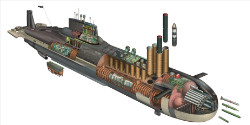 TYPHOON Class SSBN. w/Cutaway
TYPHOON Class SSBN. w/Cutaway

 Poseidon Intercontinental Nuclear-Powered Nuclear-Armed Autonomous Torpedo
Poseidon Intercontinental Nuclear-Powered Nuclear-Armed Autonomous Torpedo

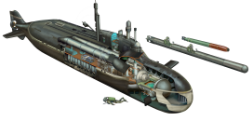 Piranha Class (LOSOS) midget sub. w/Cutaway
Piranha Class (LOSOS) midget sub. w/Cutaway

 Nerpa anti-diver UUV
Nerpa anti-diver UUV

 Russian Losharik spy sub
Russian Losharik spy sub





